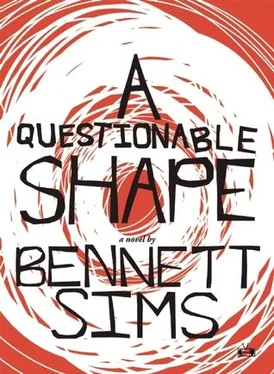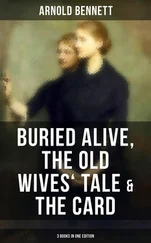I pan the binocular lenses over the infected’s shoulder, looking into the car again. This time, the officer’s back is to me. With his right hand on the wheel, he’s gesturing with the left above his head, whipping his index finger around in a frantic circle, as if miming lasso motions. He appears to be signaling someone. Dropping the binoculars from my eyes, I squint through the sudden sunlight and see whom he must have been signaling: at the edge of the parking lot is the white LCDC van, its sliding side door already open, and two officers in riot gear standing beside it. Their silhouettes are black, a complete and Kevlar dark. When they arrived I have no idea. While I was watching the doppelganger, the LCDC van must have pulled quietly into the parking lot. ‘Vermaelen,’ I hear Matt say behind me. ‘What’s the word?’ ‘Van,’ I say. ‘Give it a few minutes.’
I steeple my fingers over my brow again, shading my eyes. On the passenger side of the cruiser, Mr. Mazoch (or his doppelganger) is still standing in place. But his companion in the black polo has already begun to wander toward the van, having abandoned the officer at the wheel for the freestanding riot guards. The dark silhouette shuffles slowly, heading across the parking lot’s stark white concrete. One of the guards has his arms extended before him, locked stiff like a fisherman’s, and as I watch he begins to swivel in place, turning his torso from the cruiser to the van. Suddenly the infected swerves, staggering in that direction, moving in a rigid line toward the van’s opened side door. Wherever the guard turns, the infected follows. It takes me a moment to understand what is happening, but then I remember these high-tech shepherd’s staffs from the news: they’re the standard wildlife handlers, an aluminum pole of pool-cleaning length, with a steel collar attached at its end. Clamping the collar around an infected’s neck, an officer can wrench its body in the desired direction, controlling its movements from ten safe feet away. A handler such as this must be what the riot guard is commanding. Invisible in the distance, its thin pole is what’s responsible for this optical illusion, in which the guard appears to have telekinetic powers: how he seems to just Jedi the infected forward with his gesturing hands. Sure enough, the second guard now extends his own arms before him, and the infected begins writhing violently, in sudden protest. Meanwhile a third guard is sprawled like a marksman across the van’s hood, presumably aiming an assault rifle or something at the entire scene. Providing the others cover as they corral the infected. Everything else is deathly still and quiet.
I raise the binoculars again and zero in on the Mr. Mazoch doppelganger. He is still leaning against the cruiser, but he’s motionless, no longer pounding its window with his fist. He stands at attention, all six feet of him ramrod straight with his arms at his sides, his head slightly inclined to peer over the roof. At any moment, I know, he will be unable to resist his curiosity any longer. Following suit with his companion, he will shuffle into the parking lot, to investigate these strange new humans who have arrived on the scene. Then, before he understands what is happening, those mandibular pincers will come clamping around his neck from behind, and an unknown power start wrenching at his spine, until he is dragged into the van.
Even as I am thinking this, Mr. Mazoch — if indeed it is Mr. Mazoch — begins to move. He sidesteps rightward, crabwise, along the length of the cruiser. I follow him with the binoculars, trying to keep his gray head in frame. In seconds he clears the cruiser’s hood, and with nothing to separate him from the LCDC van, he begins to stride forward. Soon he has put sufficient distance between himself and the binoculars for me to be able to see, not just his torso, but his entire body. He takes long diagonal lunges across the parking lot, heading for one of the riot guards. He leaves his arms at his sides, where they swing languidly. His gray hands. Over his shoulder, a few yards away, I can just make out the riot guard. He is aiming the wildlife handler at Mr. Mazoch, and he is outfitted (as I’d figured) in the full exoskeletal regalia: the gleaming visored helmet and Kevlar vest and glossy greaves and gloves, all pitch dark in the morning sunlight. He has his combat boots posted firmly on the ground, hunching himself down into a tense stance, preparatory to wrestling with the infected. The aluminum pole is held outright, the collar’s clamps opened wide and ready to seize their prey. The thing looks like a praying-mantis face. Mr. Mazoch pauses, as if evaluating the situation. He angles his body leftward slightly, blocking my view of the riot guard, and I can’t see what’s going on with the pole. Only the familiar close-up of his gray hair and blue plaid shirt. He stands confused, deliberating. He’s just a yard out of the mandibles’ range. Any moment now — the second he resumes shuffling forward — he is going to walk into that trap. I keep the binoculars trained on the back of his head, too scared to look away. Except then, just when I think that he is about to take a step, something must finally catch his attention from behind. For in a slow, graceless motion he is turning, shifting his body around to face the house.
At the sight of his face in the binoculars, I stop breathing. But it is just a stranger’s face. No different from a funeral corpse: the gray skin drawn tight around the mouth, the expression slack and placid. The pallor. At first it is impossible to determine anything by his features. I could easily convince myself that this is Mr. Mazoch’s face; I could just as easily convince myself that it isn’t. After a second or two I think to close my eyes, and I try — as during the second defamiliarization exercise — to build a mental image of Matt’s own face. I clear my head of all interfering thoughts and images, and really try to see his face, to see it as it would be in old age. At Mr. Mazoch’s age. Beginning with the wire-frame template of Matt’s head, I fill it in with flesh and craft the finer details: the strong square jaw, the blunt nose, the cleft chin. Meditating unbrokenly on this face for several moments, I finally snap my eyelids open. And there it is: its afterimage shimmers briefly beyond the binocular lenses, slipping over the infected’s face like a mask. It fits the infected’s face perfectly. Mapping onto all his contours. The jaw. The blunt nose. Even the cleft chin. Yes. There’s no denying it. That is Mazoch’s face. Mr. Mazoch’s face.
Now would be the time to call Matt to the window, if that were a thing I was going to do. But I can’t. As Mr. Mazoch stares back at his house — back at this room where he reanimated, the grave that he crawled out of — I stare mesmerized into his eyes, which are wide open and white, and which seem to be peering into my own eyes, directly through the binocular lenses. I know that this is impossible. That he cannot see me. That at most I would appear as a silhouette in the window, a dim shape beyond the frame. Yet his eyes never blink, and I feel seen. Magnified, they look exactly as I have always imagined: each is as bone-pale and opaque as the Holbein blur. I could swear that they are seeing something. I try to imagine what it must have been like for him, those first few seconds after reanimation. To have to come to in this room, mere moments after bleeding to death. The opening of his eyes one more morning: sunlight on the ceiling, these memories again. Whatever it was he saw then — whether the skull’s side of his life, or all the paths of the underworld, or the beacon of a Bethlehem star — it must have led him wandering into the past. For that is the world he belongs to now. That is probably what he’s seeing — what he’s peering into — at this very moment: memories of this house. Visions of Matt as a kid in this house. The long nights spent cataloguing antiques. As for the house itself — its dilapidated exterior, the dingy siding and shattered windows — he probably can’t see it at all. It must appear to him as it appeared to me, in the streaky rearview mirror at the beginning of the week: vague, whorled, amorphous. Which is just as well. The building is not what he came back here to see. This house is not his home, anymore. Even though he has returned to it, he is looking through it — beyond it — to his true home. He cannot see it, but he knows it’s here. He is transfixed by something else, his eyes wide open and opiated, lost in an enraptured staring. His gaze is glazed with satiety. Whatever it is he sees, he obviously can’t tear his eyes from it. He needs to get his fill of it, before turning his back on it, and facing the riot guard behind him.
Читать дальше












